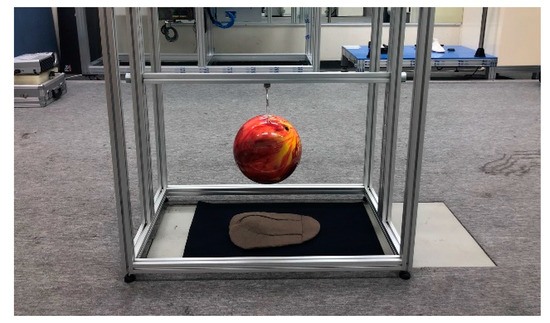In the recently published ‘Developing Fall-Impact Protection Pad with 3D Mesh Curved Surface Structure Using 3D Printing Technology,’ authors Jung Hyun Park and Jeong Ran Lee once again prove our point that 3D printing is affecting nearly every industry today—and positively so.
 Here, the researchers raised the concern of the ease in which the elderly are injured by falls, which are all too common. With their new concept for 3D printed fall-impact protection pads, seniors may not be able to prevent falls that usually occur due to balance issues with age, health conditions, dizziness due to medical treatments, failing eyesight and more, but they may be able to survive them much better.
Here, the researchers raised the concern of the ease in which the elderly are injured by falls, which are all too common. With their new concept for 3D printed fall-impact protection pads, seniors may not be able to prevent falls that usually occur due to balance issues with age, health conditions, dizziness due to medical treatments, failing eyesight and more, but they may be able to survive them much better.
Park and Lee, both hailing from Pusan National University in Korea, present a design for curved protective pads that could be printed directly from scans of patients, allowing for individually-specific treatment—one of the greatest benefits of 3D printing in the medical realm today. And assistance is obviously much needed in this area as reports from Korea show that increasing numbers of elderly Koreans are taking such serious falls that they must be hospitalized; in fact, some remain in the hospital for over two weeks—often due to broken hips.
“It is becoming increasingly important to prevent the elderly from falling. Wearing hip protectors can prevent falls or reduce the damage caused by falling,” explain the researchers. “However, existing hip protectors are not suitable for use with daily clothes; they are not widely utilized because of aesthetic limitations. Furthermore, they are not comfortable. Therefore, it is necessary to develop an optimized impact protector with due consideration for body characteristics and motion.
“Additionally, it is necessary to improve the wearing satisfaction by designing the impact protector in a form that is suited to the shape and motion of the human body while maintaining its protection performance.”
Park and Lee point out, and are quite right, that so far 3D printing with any type of clothing has mainly been dedicated to fashion—and with spectacular results, from haute couture to high heels.
The 3D modeling process included creating a baseline for body scan data, making an outline, and then using a pad outline along the patient’s body—making a curve to mimic the human body. Afterward, they created a hexagonal mesh structure, with the pad completed by transforming the mesh structure—according to the curves of the body.
The 3D printed pads were fabricated via FDM 3D printing using a Cubicon Single 3D printer, chosen due to its capabilities for using more flexible materials; thus, a flexible TPU was used for creating the padded materials.
The researchers were forced to divide printing of the pads due to size:
“The radial split method for dividing pieces into three by 120° from the center point of the pad, and the elliptical split method for dividing pieces into four according to the sideline and curved surface were used,” explained the researchers.
Once supports were removed, the parts were stitched together. Overall, the parts proved to be ‘structurally flexible,’ and the modeling proved to be excellent for creating the necessary protection.
“Through several iterative experiments, we developed a reasonable and delicate modeling method that yielded results which are applicable to research on clothing and other fields,” stated the researchers. “Existing 3D printing technology has been deployed to produce very hard products; however, in this study, the printing conditions were finely set, in consideration of the complex characteristics of flexible filament materials. Finally, we believe that our findings foreground the possibility of using 3D printing technology to print complex and elaborate shapes in the field of functional clothing.”
What do you think of this news? Let us know your thoughts; join the discussion of this and other 3D printing topics at 3DPrintBoard.com.

Steps of creating pad outline and base surface: (a) rotate and place pad outline by section; (b) transform pad outlines to fit surfaces; (c) rebuild curve; and (d) create network surface.
Subscribe to Our Email Newsletter
Stay up-to-date on all the latest news from the 3D printing industry and receive information and offers from third party vendors.
You May Also Like
New Report: Semiconductor Industry to See $1.4B in 3D Printing Revenues by 2032
“The semiconductor sector has become the most strategically significant area of global industry.” Truer words are hard to come by when it comes to the modern world, and they are...
Will Photonic-Crystal Lasers Revolutionize 3D Printing?
Powder bed fusion (PBF) for metals and polymers predominantly utilizes lasers as the primary heat source. Some directed energy deposition (DED) technologies also employ lasers, while various vat polymerization methods...
3D Printing Unpeeled: Orbex Investment, IndoMIM and HP, Ultrasonic Waves
INDO-MIM has bought three HP Metal Jet S100 printers, operating two in India and one in Texas. This is a win for HP because the company has deep experience in...
3D Printing Webinar and Event Roundup: April 21, 2024
It’s another busy week of webinars and events, starting with Hannover Messe in Germany and continuing with Metalcasting Congress, Chinaplas, TechBlick’s Innovation Festival, and more. Stratasys continues its advanced training...

































